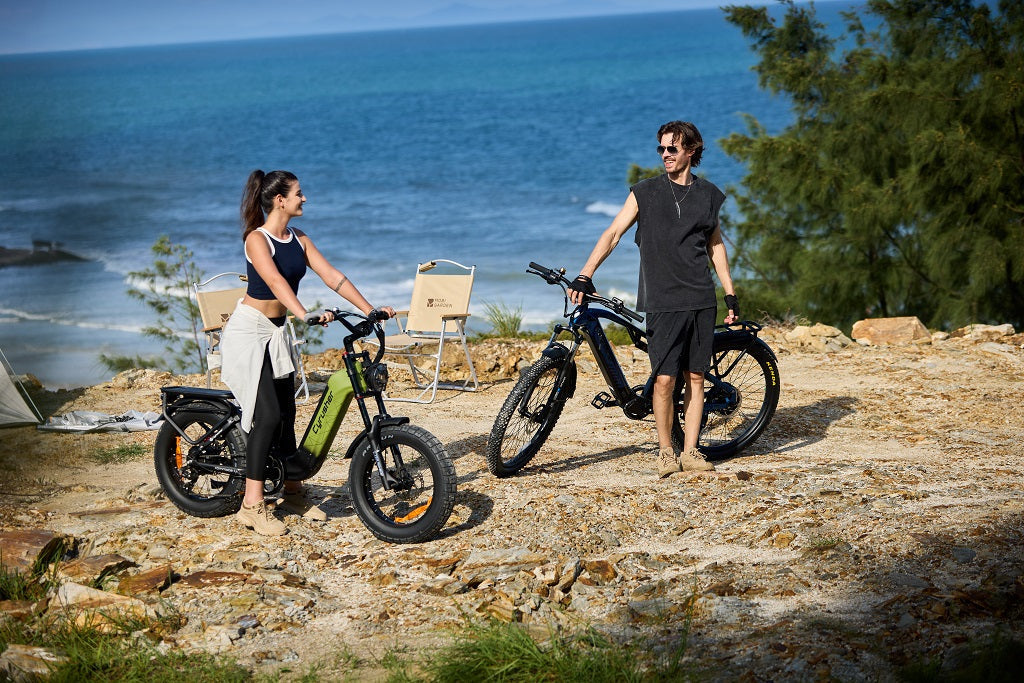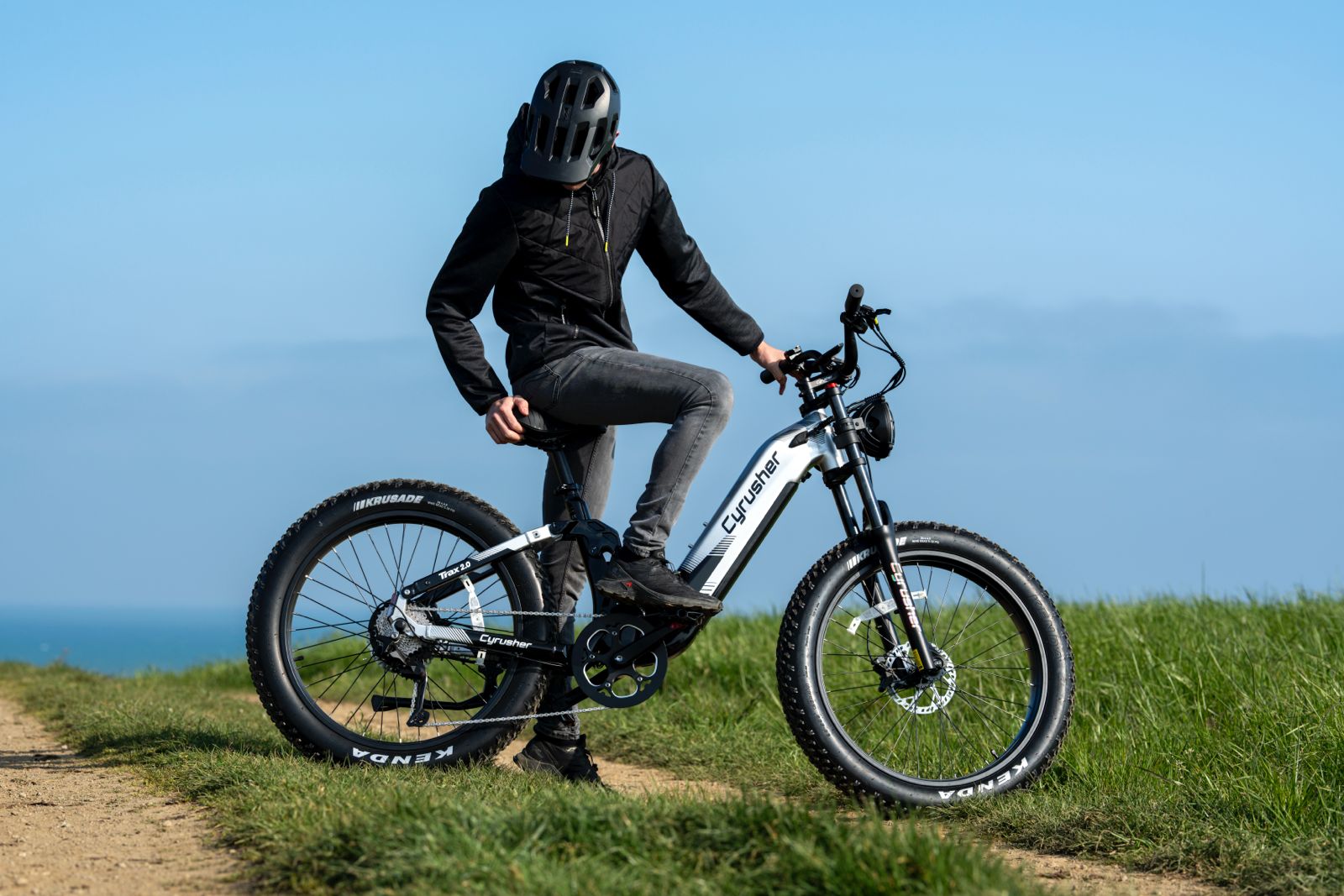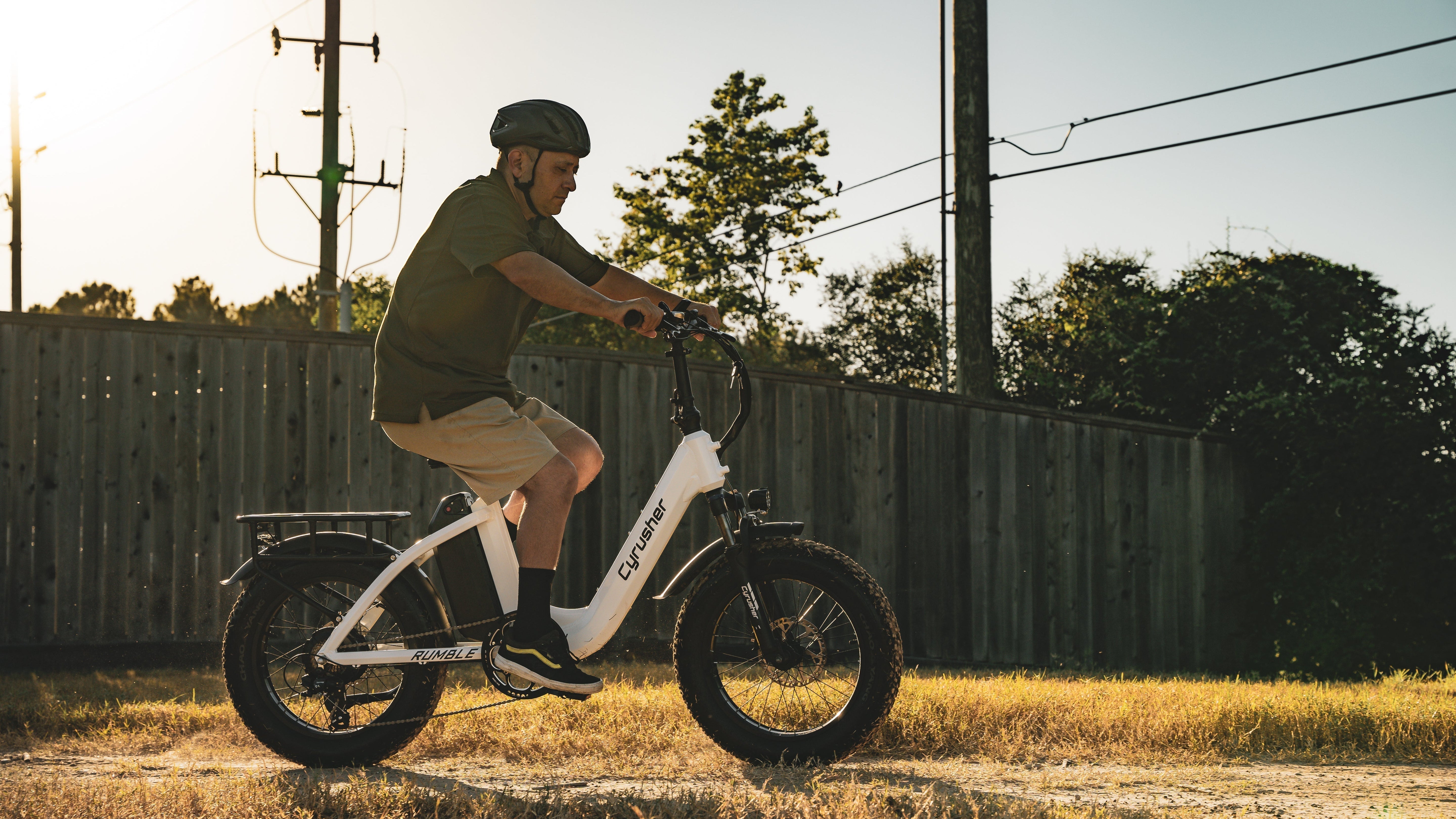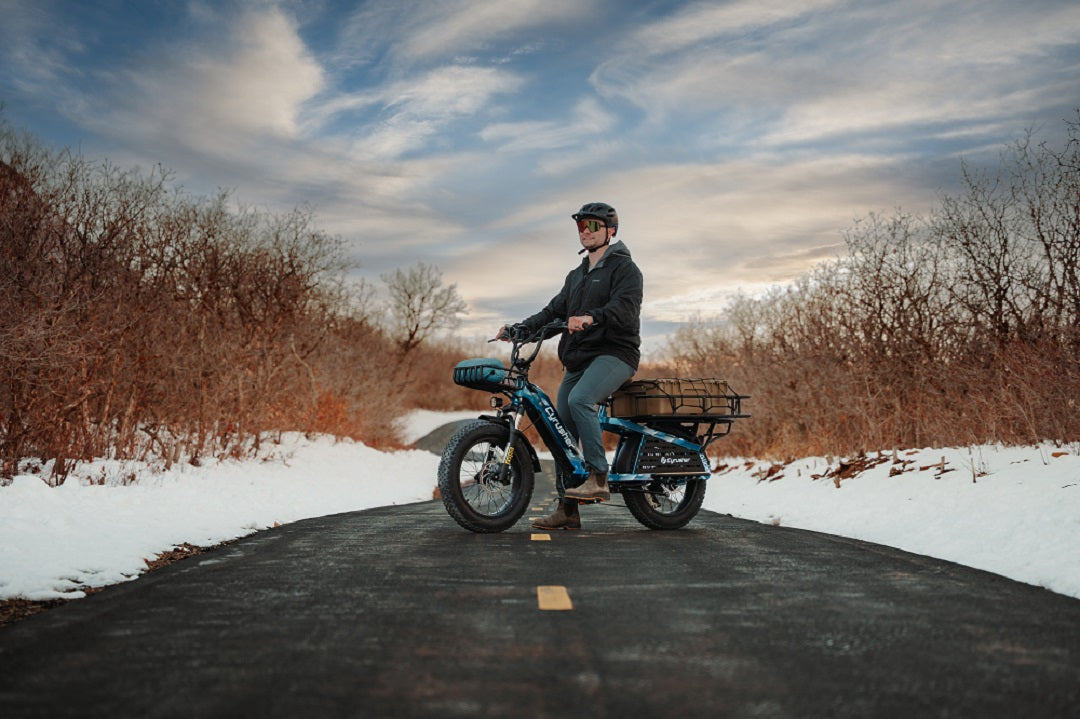Many riders aren’t aware of the origins behind the geometric frame designs. While they appreciate the convenience and practicality of different frame styles after trying various riding experiences, they often don’t fully understand the fundamental differences between them.
E-bikes are becoming increasingly popular in everyday life. With diverse rider preferences and body sizes, the market offers various frame designs to meet different needs. Among these, the step-through and step-over electric mountain bike frames are the two main geometry types.
Step-over frames represent the more traditional style of electric mountain bikes, but there’s a rising demand for step-through models, especially among riders who enjoy urban cycling. Whether you’re choosing an electric bike for professional racing, adventure-filled mountain biking, or hauling cargo, selecting an e-bike with a frame geometry that suits your height and riding style is crucial for comfort and performance.
High-step and low-step?
Generally speaking, an electric bicycle frame is a solid geometric structure consisting of a top tube, down tube, seat tube, fork, seat stay, and chain stay components. The significant difference between high-step electric bike frames and low-step electric bike frame types is the difference in these geometries.
The Cyrusher Rover, for example, is a high step-over type electric bike. Its frame design covers all of the geometry components mentioned above, presenting a diamond-shaped frame of two triangles. This frame structure is a solid and stable bike for riders who need to withstand larger sizes or participate in more adventurous riding events.

The Cyrusher Kommoda3.0 is a low step-through e-bike. Its main frame is a triangular structure that differs from a step-through electric bike in that there is no top tube between the seat tube and fork, which is the connection of the e-bike's crossbar, making it easier for the rider to traverse the frame of the bicycle. And the part of the step-over ebike that connects the handlebars to the chain stay is thicker, which is also considered for the stability of the ride. In addition, you will also see step-through electric bikes with top tubes on the market. These step-through electric bicycles with top tubes are relatively lower than the top tubes of step-through electric bicycles, bringing more choices for people with different needs.

What are the advantages and disadvantages of step-over and step-through e-bikes?
To more fully understand the differences between the two types of electric bicycles, you also need a more comprehensive understanding of their advantages and disadvantages to choose better the one you need.
Step-through e-bikes
Advantages:
1. Convenient for Riders with Limited Mobility or Petite Stature
Step-through electric bikes are especially convenient for riders who have limited mobility or a smaller build. Because they lack a top tube, there’s no need to lift your leg over the frame, making mounting and dismounting much easier. The pedals are positioned lower, and both assembly and disassembly are straightforward. Riders can simply step through the frame and enjoy a comfortable, relaxed ride. This design is ideal for those wearing formal or stiff clothing, older riders, or anyone who finds traditional bike frames challenging. Additionally, smaller riders don’t have to raise their pedaling position, which adds to the comfort. For individuals recovering from knee or hip surgery, a step-through e-bike offers a gentle way to keep joints active without strain.
2. Safe and Comfortable for Carrying Cargo
Step-through electric bikes are also great for carrying cargo. Their design makes handling easier, especially when towing a trailer or carrying loads. The open frame allows riders to quickly plant both feet on the ground if they feel unstable, providing extra safety and confidence. In fact, the step-through frame was originally designed to facilitate the transport of goods, making it a practical choice for riders who need to haul items regularly.
3. Stylish and Minimalist
When it comes to style, step-through e-bikes offer a sleek, minimalist look that resonates with many urban cyclists. Their clean lines and simple design make them a fashionable choice for commuting or leisurely weekend rides, combining function with modern aesthetics.
Disadvantages:
1. Not Ideal for Larger Riders
The step-through bike frame features a triangular design without a top tube, which makes the overall structure less robust. This can be a drawback for larger riders or those who subject their bikes to heavy use, as the frame may not provide enough strength or durability. However, fat-tire electric bikes like those from Cyrusher help address this issue by offering a sturdier build and improved stability, making them a better option for bigger riders.
2. Limited Accessory Placement
Because of the lower frame design on step-through bikes, there is less space available to mount accessories such as water bottle holders or other gear. This can be inconvenient for riders who rely on multiple attachments during their rides.
3. More Challenging on Hills
Step-through electric bikes generally exert less power when climbing hills compared to step-over models. The lower frame can reduce pedaling efficiency and frequency, as riders tend to focus more on controlling the handlebars during ascents. This makes step-through bikes less suitable for demanding cross-country or hilly terrain. However, this limitation is less pronounced in fat-tire step-through e-bikes, which are designed for all-terrain use and offer better traction and stability on varied surfaces.
Step-over e-bikes
Advantages:
1. Stability Across Various Terrains
If you enjoy off-road racing and adventure riding, a step-over e-bike is an excellent choice. Its diamond-shaped frame provides superior stability, allowing you to confidently navigate rugged and uneven terrain throughout your ride.
2. Long Service Life
From an engineering perspective, the step-over frame is the most robust design. Its sturdy construction ensures durability and reliability, making it a dependable companion for long rides and extended use.
3. Lighter Weight and Efficiency
The diamond frame design also contributes to a lighter overall weight, helping step-over e-bikes reach higher speeds with less energy. Typically, these bikes use lightweight materials that enhance performance and efficiency without sacrificing strength.

Disadvantages:
1. Uncomfortable for Long Rides
Step-over e-bikes feature a top tube, which can make long rides less comfortable. Riders may experience fatigue, and repeatedly stepping over the frame can become inconvenient, reducing overall riding comfort.
2. Less Suitable for Extreme Conditions
The high-step frame design of step-over e-bikes can be challenging for less agile riders, making them a less ideal choice for extreme or demanding conditions where quick mounting and dismounting are necessary.
Conclusion
Both e-bike frame styles can make excellent riding companions. However, the best choice depends on your cycling style and intended use, as each frame offers its own advantages and trade-offs. By understanding the differences between step-through and step-over e-bikes, you can select the frame that best suits your cycling workouts. Cyrusher fat tire electric bikes help address the limitations of both frame types, offering a versatile solution for a wide range of riders.









Share:
The Health Benefits of Cycling for Middle-Aged and Older Adults
The Complete Guide to E-Bike Terrain Matching